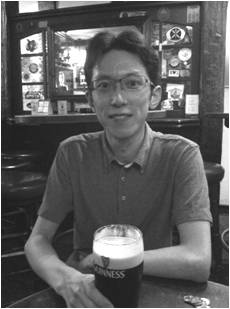Research History of Dr. Kumeta

粂田 昌宏
Masahiro Kumeta
Assistant Professor
Education:
2000-2004. Faculty of Integrated Human Studies, Kyoto University
2004-2010. Graduate School of Biostudies, Kyoto University
2010. Ph.D.
Carrier:
2008-2010. JSPS research fellow
2010-present. Assistant Professor, Graduate School of Biostudies, Kyoto University
2011-present. Adjunct Assistant Professor, iCeMS, Kyoto University
Keywords:
[Research Area] Cell Biology, Molecular Biology, Structural Biology
[Specific Words] Cytoskeleton, Nucleus, Nucleolus, Nuclear membrane, Nuclear pore complex, Nuclear transport, Primary cilium, Molecular crowding, Phase separation, Pase transition, Sound
Topics of Research
Structural basis for cellular architectures
Cellular functions are maintained by a variety of functional macromolecular complexes and compartments, of which assembly and disassembly must be properly regulated. Considering the highly crowded subcellular environment (~200 mg/ml protein concentratioin), molecular assembly is expected to be controlled by weak molecular attraction forces such as hydrophobic interactions, rather than the 'lock-and-key' style binding forces. We focused on a set of highly insoluble proteins and performed visual analyses using Atomic Force Microscope, Mass spec identification of the components, and produced more than 200 monoclonal antibodies against them. Investigations using these tools revealed highly dynamic nature of the insoluble cellular basis.
Diffusion-based molecular sorting systems inside the cell
We are interested in the diffusion-based molecular behaviors in cells in terms of the transmission of information. Since dissusion is sufficient to move molecules from one end of a cell to the other end in seconds, cells regulate the molecular locations by restricting random diffusive molecular movements. We focused on several subcellular barriers including nuclear pore complex and basal part of the primary cilium to understand cellular strategies to achieve proper subcellular distribution of molecules by controlling diffusion.
Cellular responses to audible sound stimulation
Audible sound is a ubiquitous environmental factor in nature that transmits oscillatory compressional pressure through the substances. Although sound is one of the most inportant environmental information and communication tool for animals, there was almost no scientific reports investigating sound effects at the cellular level. We started from testing whether culture cells exhibit gene response against sound stimulations, and revealed that several mechano-sensitive genes were suppressed in pressure level- and waveform-specific manners. Some type of cells exhibited a robust response, whereas others were partially or completely insensitive, suggesting a cell type-specific response to sound. These findings reveal a cell-level systematic response to audible sound and uncover novel relationships between life and sound.